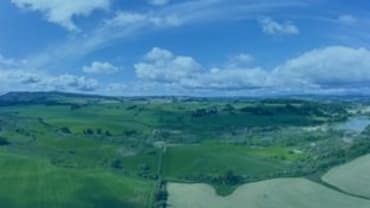As part and parcel of our rural work, we often assist clients in establishing their responsibilities in respect of boundary features and fencing. While it has been said that "there is more that unites us than divides us", fencing and boundary issues are an important aspect of rural property and business management. This article will look at boundary ownership and the duty of care that arises from it.
An examination of the title deeds will often confirm whether boundary features are the sole responsibility of an owner or whether there will be an obligation to share maintenance with a neighbouring proprietor. Fencing can prove very costly so it is right to have the position checked prior to instructing boundary works.
Where the whole boundary fence is contained within the extent of ownership, an owner has freedom to commence and proceed with maintenance as they wish. However, in situations where ownership of a boundary fence or dyke is shared the position is more complex. This is because an owner and neighbouring proprietor each own the boundary up to its midpoint and consequently share responsibility with regards to its condition. It may be that one owner repairs "their" side, but they cannot take such action as to undermine the stability of the boundary to the neighbour's side. Alternatively it may be that the title deeds direct that whole boundary structure is jointly owned. In these situations owners may not make alterations to any part of the boundary without obtaining the consent of their neighbour.
Upon confirmation that boundary fences are shared, the title deeds may also prescribe a specific maintenance standard in relation to the boundary, as well as a procedure for repair and apportionment of costs between owners. It may be the case that repairs are the responsibility of one party or indeed a matter of co-operation between both. In circumstances where the title deeds are silent on the provision of maintenance, it is appropriate to discuss the repairs with the neighbouring proprietor and thereafter agree how the repairs are to be undertaken and the costs shared. Ultimately there are legal remedies if agreement cannot be reached.
For tenants who may be unsure of their responsibility for the provision and maintenance of boundary features then the first action should be to review the terms set out in their lease documents. Should the lease be silent on the point, or, if there is no written lease agreement, the position is dealt with in the same way as other items of fixed equipment. It is necessary to categorise whether the required fencing work is a renewal of an existing fence or routine maintenance. If a tenant proposes to erect an entirely new fence then it is important to ensure that the correct notice procedure is followed in consultation with the landlord. This is to safeguard the position on compensation for the fencing work on termination of the lease.
The Animals (Scotland) Act 1987 is of importance to stock farms as, in certain circumstances, there is a "strict liability" placed on owners of stock in respect of damage caused by their animals. This is irrespective of whether there has been any deliberate or reckless conduct by an owner. Under common law the owner of an animal is responsible for damage or injury caused by that animal if fault or negligence can be proved. To avoid liability under common law, the owner of the animal must have taken reasonable care to prevent the animal straying. This would involve steps such as ensuring all fences were in stock-proof condition. The case law in this area has evolved in such a way that there would appear to be a higher standard of care on farmers where their field adjoins a public highway, and while this can be an insured risk, we do live in ever more litigious times.
Also of relevance is the Occupiers Liability (Scotland) Act 1960, which places a duty on the "occupier" of land to ensure anyone who enters that land is prevented from suffering injury on that land, whether or not they have permission to be there. The duty of the occupier of land is to take reasonable care. This means that the occupier of the land will owe a duty of care if they could reasonably have foreseen that injury could occur as a result of the condition of the land or a hazard on the land.
In order to assess the risk in this regard the following questions should be asked:
1. Did the occupier owe a duty of care to the visitor?
2. If yes _ what was the appropriate standard of care taking account of the following:-
- a. Status of the visitor _ were they reasonably expected?
- b. Characteristics of the visitor _ child? Able-bodied?
- c. What was the nature of the danger?
3. Did the breach of duty cause injury or damage?
4. Was the risk one for which the occupier is legally responsible?
5. Were any suitable risk assessments and inspection regimes adhered to?
6. Was the risk accepted by the visitor?
7. Did the visitor's negligence contribute to the injury or damage?
In summary, it is clear that owners have a responsibility for repair and maintenance of their boundaries, and, there is a duty to prevent injury or damage to third parties who come on to their land. If it is reasonably foreseeable that something on their farm could cause harm to someone who has entered on to land, the best course of action would be to consider "occupiers' liability" and to put in place such protections or warnings as a reasonable person would consider necessary to prevent harm occurring. If an owner has fully considered their obligation to fence their boundaries, and has followed the risk minimising considerations outline above, then the owner stands the best chance of complying with the duty of care in respect of boundary fencing.
Jennifer Muir is an Associate in the land and rural business team at Brodies LLP.











